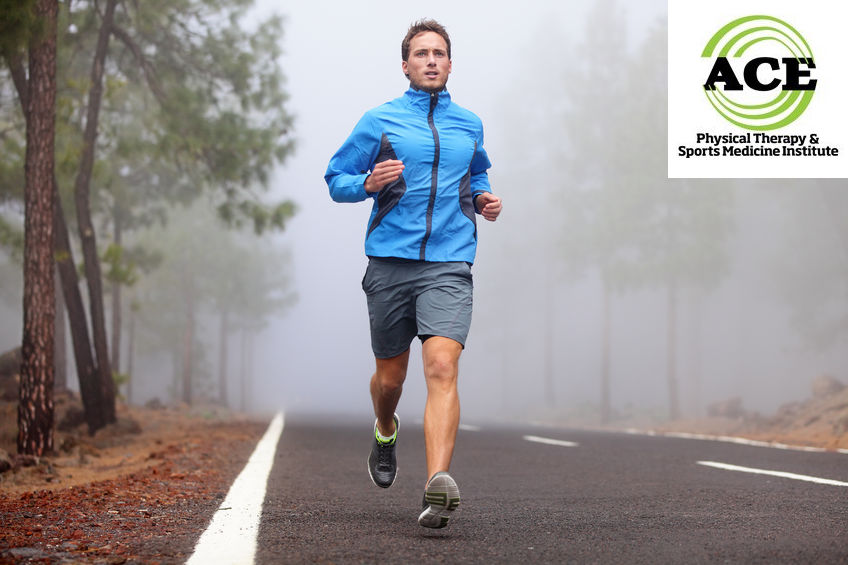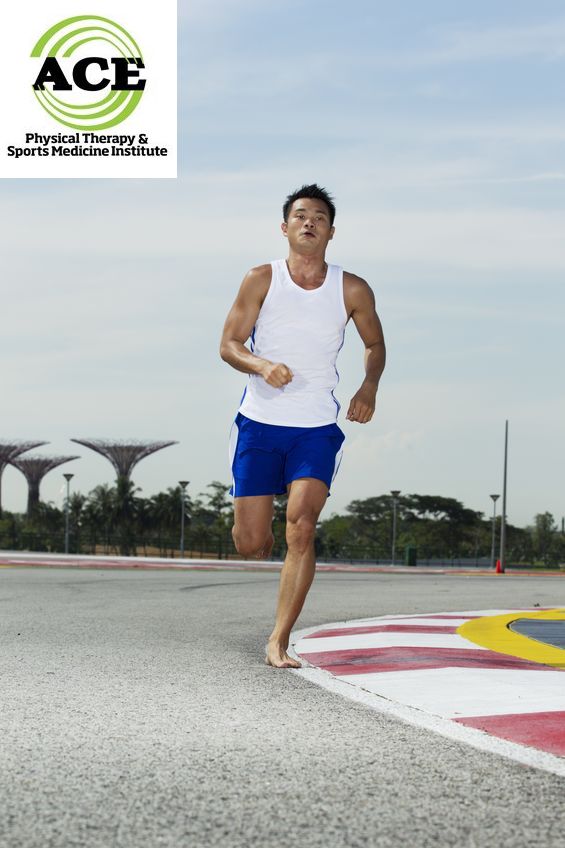DO RUNNING SHOES CAUSE INJURIES?

Tid Bits of Info
- 80% of all runners will experience a “running” injury during their running career.
- Nearly 90% of all runners are “heel strikers.”
- Running shoes might change gait pattern and weaken muscles, change biomechanics, and reduce neural input.
- Weak posterior chain muscles are linked to most running injuries.
- If you get injured, seek advice and treatment from a Physical Therapist.
Throughout most of history, people ran barefoot or in thin-soled shoes. In recent years, many people have started running barefoot again, and it takes special measures to prevent injuries or pain to the bottom of the feet. When running shoes were first introduced to the running world in the 1970s, they eliminated the need to pay special attention to the way a runner lands on their feet. This provided support and protection but the change in running patterns may also have caused more injuries.
Running barefoot encourages a soft landing and usually on the mid to front of the foot. When running in shoes, studies have shown that greater than 80% of all runners land on the heel (heel strikers) when they are wearing a running shoe. Many studies over the past 10 years have indicated that heel strikers suffer more running injuries to their lower extremities than mid/forefoot strikers.

Running shoes were invented to help support and protect the foot during long-distance runs. Training for long races includes hours of running on various surfaces and over many types of terrain. A “good” running shoe is supposed to help reduce the excess motion in the foot/ankle complex upon landing and protect the bottom of the foot from contact injuries. Unfortunately, the use of any shoe encourages the runner to stride longer and land harder on their feet and this can lead to an injury. It has been reported that nearly 80% of all runners will suffer an injury to their lower extremities at some point in time during their running careers. It is impossible to link the use of a running shoe to all of these injuries, but the shoes might weaken the muscles of the lower extremities, change the biomechanics of the foot/ankle complex and reduce the neural input to the sole (plantar surface) of the foot. All of these or anyone individually might cause injuries to the lower extremities.
Running barefoot might not be practical in many instances. For those who choose to run barefoot, there are barefoot exercises that help with strength and balance as well as facilitating proper biomechanics throughout the lower extremities. The jury is still out on a minimalist running shoes, but the reduced support to the foot should help to simulate barefoot running. More studies have to be completed to determine if these shoes are able to mimic barefoot running.
Exercise and running barefoot can enhance the neurological input to the lower extremity. The entire leg is dependent upon this input to function properly. The plantar surface of the foot provides a great deal of sensory input to muscles of the foot/ankle complex and this in turn helps to regulate and control the way the entire leg functions. When the information is lacking the entire leg becomes more susceptible to suffering an injury due to the abnormal function of one or all of the lower extremity joints.
Walking and running barefoot have been linked to the strengthening the posterior chain and intrinsic foot muscles. The weakness of the posterior chain muscles has been associated with many running injuries. The posterior chain muscles are on the back of the leg and spine. The main muscles that make up the posterior chain are the calf muscles, hamstrings, gluteus maximi, latissimus dorsi, and the erector spinae muscles. When someone exercises or runs on the mid to forefoot their center of gravity shifts forward and this stimulates the posterior chain muscles to be more active and develop strength.
Mid/forefoot strikers generally have a shorter stride length. The shorter stride produces greater knee and hip flexion and the muscles are put at a length-tension relationship that is conducive to generating a great deal of muscle contraction force. This helps to control the hip and knee during the impact phase of running. When the muscles are strong enough and contract at the proper time, they are capable of reducing the amount of impact force that is produced in the lower extremity joints during a run.
Running shoes have protected the plantar surface of the runner’s feet for the past 50 years. The designs of the shoes are numerous and there are claims of many biomechanical advantages when utilizing a particular shoe. The use of barefoot exercises and running without shoes appears to have merit when it comes to preventing injuries that are associate with running. It truly comes down to personal preference, but some shoeless exercise/activity should be incorporated into your exercise routine in an attempt to reduce the possibility of experiencing a “running” injury.
























